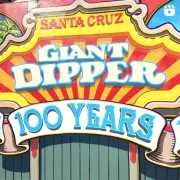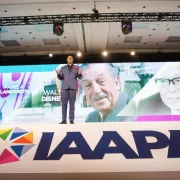IN AN EDUCATIONAL SESSION at the annual AIMS International Safety Seminar in Orlando in January 2025, Erik H. Beard, managing member of International Ride Training, LLC., stressed the vital role of standard operating procedures (SOP) in effective ride operations training. He explains the primary purpose of an SOP manual is to serve as a detailed training tool that enables employees to perform tasks accurately. “It is your bible of operation. People should be able to pick up your SOP manual and actually operate one of your rides with it,” says Beard.
Beard also highlights the legal importance of SOP manuals. In litigation, they act as defense tools and demonstrate facility’s commitment to safety and precision. Poorly written or incomplete manuals leave gaps that plaintiffs can exploit, potentially weakening the facility’s case. Seasonal staff might completely understand all that is required, but can a person with no prior knowledge or experience read the SOP manual and know all tasks that need to be performed? A thorough, well-structured manual strengthens the defense. “If your manual is complete, it essentially tells the story of how safe you are and how much you’re paying attention to the detail.,” says Beard.
Finally, Beard addresses compliance. Most states mandate safety documentation, and failure to meet these requirements can result in audits, penalties, or even business closures. A well-detailed manual creates safe experiences for guests and employees, ensures compliance, reduces risks, and safeguards the facility’s reputation.
Sourcing Material for a Manual
Creating a comprehensive SOP manual for an attraction requires gathering and organizing information from multiple sources to ensure it is practical, compliant, and tailored to meet the individual needs of a facility. Funworld presents the sources must be considered when gathering content for an SOP manual.
Manufacturer’s Operations and Maintenance (O&M) Manual
The manufacturer’s O&M manual is a critical starting point for creating an SOP manual. However, these manuals are often lengthy and filled with technical details that are irrelevant to ride operators. To effectively use the O&M manual, pull content that is operationally focused, such as height and weight requirements, button sequences for operation, restraint check procedures, and emergency stop protocols.
O&M manuals are often generic and will usually not account for a facility’s specific installation. The SOP operations manual should focus on information that is required for operators to know, such as the location of platform dispatch buttons, queue layout and guest flow, and park-specific safety zones and procedures, distilled into clear, actionable steps.
Local Laws and Regulations
Compliance with local laws and regulations is essential when creating an SOP manual. Each jurisdiction has unique requirements, and failing to adhere to them can result in fines, liability, or even shutdowns. To gather this information, attractions need to identify their country, regional and local ride safety regulations. This may include restrictions such as rider weight requirements, signage, or evacuation plans. Regulations by region (state or province) within a country can vary significantly.
Compliance, documentation, and procedures should include training requirements for operators, inspection protocols, and emergency response procedures. Because regulations can change, operators should regularly review and update manuals to reflect the latest requirements.
An attraction that thoroughly understands and incorporates local laws ensures an SOP manual meets legal standards and avoids compliance issues.
International Standards for Amusement Rides and Devices
ASTM International and EN standards are a cornerstone of ride safety and operations documentation globally. These standards provide a framework for creating SOP manuals that are both practical and compliant. Key steps include identifying relevant standards, determining what versions of those standards are applicable, and crafting a manual and checklist structure.
ASTM F770 is the standard for ride operations, maintenance, and inspection. It outlines required sections for SOP manuals, such as operator duties, evacuation plans, downtime and unusual condition protocols, park-specific instructions, and inspection protocols. EN 13814-2 focuses on operation, maintenance and use including SOP manual guidance.
ASTM and EN standards are written by industry professionals in a practical, easy-to-follow format that helps ensure an SOP manual aligns with industry best practices and regulatory expectations.
Considering a Facility’s Unique Operating Experience
A facility’s operating environment and experience is invaluable when creating an SOP manual. While standards and manufacturer guidelines provide a foundation, the specifics of the attraction’s installation along with the attraction’s team and their day-to-day knowledge adds practical insights. The same attraction installed at different facilities might have a different SOP manual because the operations of the ride or installation are not identical. When gathering tasks to be included in the manual, use proven practices for specific, outlined scenarios that have been vetted and tested.
Proven practices incorporated from a facility’s experience may include—but are not limited to—guest flow management strategies, the handling of common operational challenges, evacuation procedures, and facility or attraction protocols. These protocols may include the way a park or attraction handles guest complaints, weather-related ride closures, or procedures for responding to unique emergencies.
Facilities incorporating their operational knowledge helps create an SOP manual that is both practical and tailored to the facility and its attractions. Facilities must understand that manufacturer guidelines cannot be overridden and any operational changes should be discussed with the manufacturer, or if the manufacturer is not available, a functional safety review process is completed with a qualified individual.
The inclusion of visual aids such as photographs, diagrams, and charts ensure the SOP manual is more accessible, especially for employees with varying levels of reading comprehension.
A final and important step is for attractions to test their manuals to identify contradictions, ambiguities, or clarify concerns. Procedures must be tested step-by-step to ensure they are clear, accurate, and actionable.
Finally, an SOP manual should be organized with a clear table of contents that allows employees to quickly find needed information.





 The Official Magazine of IAAPA
The Official Magazine of IAAPA







